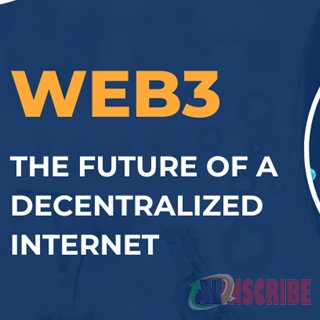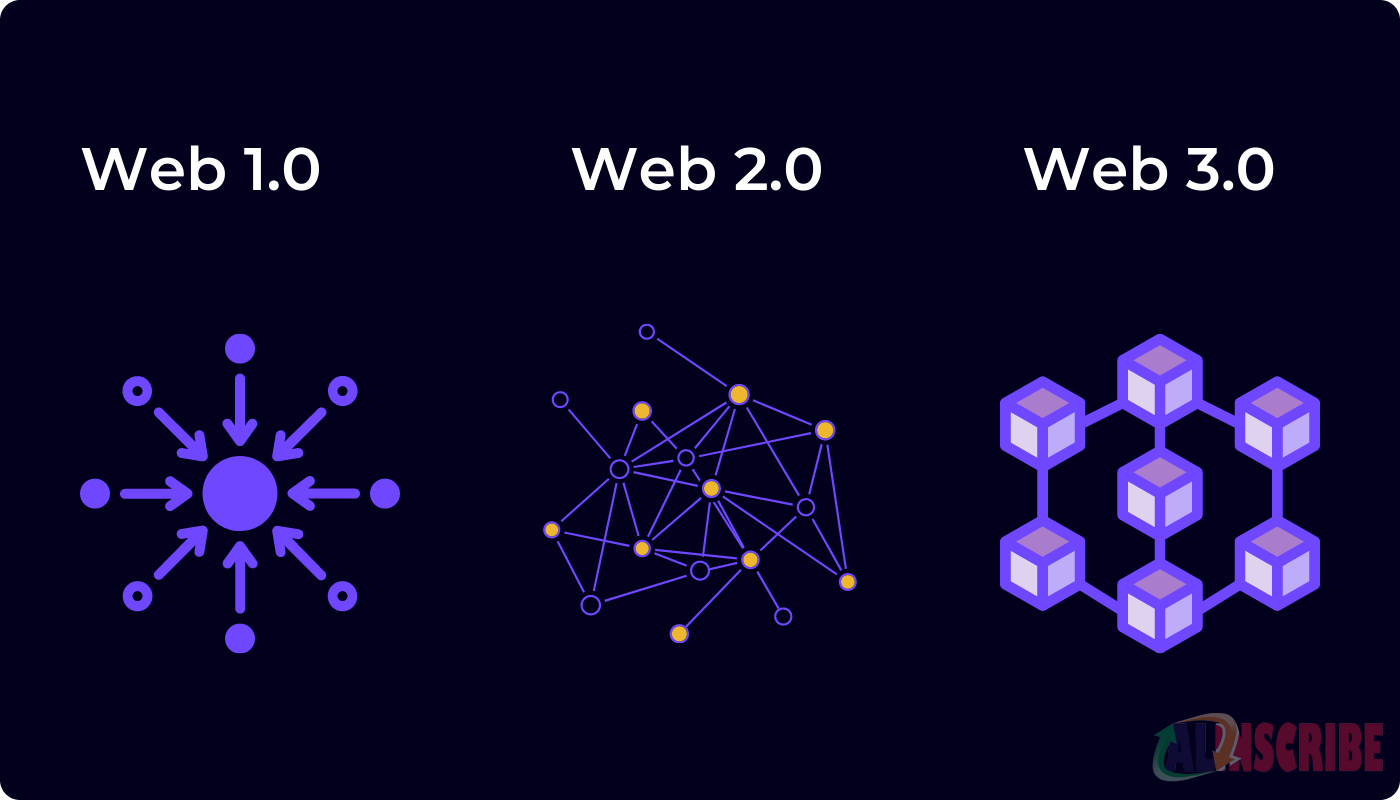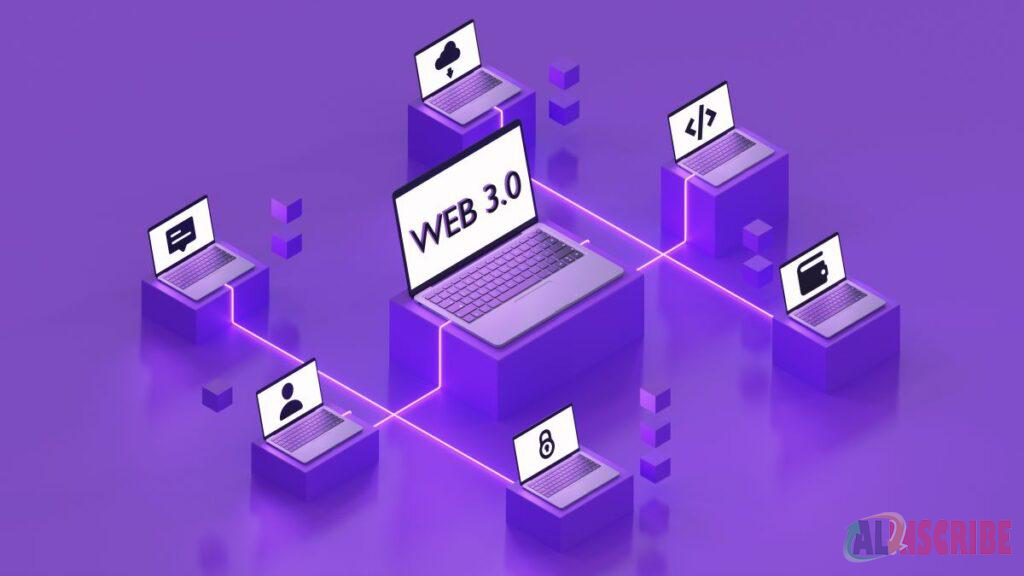Web3 - The Future Of A Decentralized Internet
Author: editor
Published in: Engineering & Technology

Web3 is the popular name for the current state of change on the internet. Web3 is not just an update; it completely revamps how we communicate and collaborate online. PwC estimates that by 2030, the blockchain technology powering Web3 will be responsible for over $3 trillion in annual economic value. Users will have a greater say over their data, and web developers will have access to a whole new set of tools thanks to this transformation.
Understanding Web3 and its influence on web development is essential for anybody with a financial stake in the digital world, whether you're a firm hoping to exploit new technology or a developer trying to build the next big thing. So, let's dig into this shifting terrain and see how it's fundamentally altering web development.
What is Web 3.0?
When we talk about the future of the web, we talk about Web 3.0, also known as the Semantic Web or the read-write-execute era (beginning in 2010 and continuing forward). By giving computers the ability to evaluate data in the same manner that people do, AI and ML facilitate the intelligent creation and dissemination of meaningful content tailored to the requirements of individual users.
Despite their differing features, decentralisation is central to both Web 2.0 and Web 3.0. Developers in the Web 3.0 era rarely build and release programs that just require one server or one database (often hosted and managed by one cloud provider).
Blockchains, decentralised networks of many peer-to-peer nodes (servers), and hybrids are the foundations upon which Web 3.0 applications are created. The Web 3.0 set frequently refers to these tools as decentralised applications (DApps). To construct a reliable and secure decentralized network, players (developers) in the network are compensated for providing the best possible services.

How Web 3.0 Helps in a Decentralized Internet?
Web 3.0, often called the "Decentralised Web," aims to address some of the centralisation and privacy issues associated with the current Web 2.0. It leverages various technologies and concepts to decentralise the internet in several ways:
Blockchain Technology
Blockchain is at the core of many Web 3.0 applications. It enables the creation of decentralised, tamper-resistant ledgers that can be used for various purposes, including identity management, content storage, and smart contracts. This reduces the reliance on centralised intermediaries and allows users more control over their data.
Decentralised Applications (DApps)
Web 3.0 promotes the development of DApps, applications built on blockchain or other decentralised technologies. These apps run on a network of computers rather than a single central server, making them less susceptible to censorship and downtime.
Peer-to-Peer (P2P) Networking
Web 3.0 applications often use P2P networks to distribute content and data. Instead of relying on central servers, users connect directly to each other, increasing resilience and reducing the risk of centralised control.
Decentralised File Storage
Web 3.0 introduces decentralised file storage systems like IPFS (InterPlanetary File System) and Swarm. These systems break content into small pieces and distribute them across a network of nodes, making it harder for any single entity to control or censor content.
Tokenization and Cryptocurrency
Cryptocurrencies and tokens play a significant role in Web 3.0. They enable new economic models, incentivise network participation, and allow microtransactions. This can reduce reliance on advertising-based business models that often lead to data privacy concerns.
Self-Sovereign Identity
Web 3.0 envisions a world where individuals have control over their digital identities. Self-sovereign identity systems allow users to securely manage and share their personal information without relying on centralised identity providers.
Smart Contracts
Smart contracts are self-executing contracts with the terms of the agreement directly written into code. They enable trustless transactions and automation of processes without the need for intermediaries, making it possible to build decentralized applications that execute transactions and agreements automatically.
User Empowerment
Web 3.0 aims to give users more control over their data and digital assets. Users can own and manage their data, choosing when and how to share it. This contrasts to Web 2.0, where major corporations frequently gather and profit from user data.
Interoperability
Web 3.0 protocols and standards are designed to be interoperable, allowing different decentralised systems to work together seamlessly. This reduces the risk of creating new centralised silos.
Best Web3 courses in 2023
If you are someone who doesn't have much knowledge about Web 3.0 you can also avail best Web3 courses in 2023. Some of them are:
Web3 University
Several web 3 courses of study covering many aspects of Web3 programming are available through Web3 University. Topics covered in this stream include NFT development, smart contract writing, and training in blockchain-focused languages like Solidity and Solana. There are both videos and written guides available for free. The Build Your First Smart Contract course is a great place to begin if you're an entrepreneur or developer trying to get into the Web3 arena. Everything on Web3 University is totally free to check out.
ChainShot
ChainShot is a Web3 course for 10 weeks with the promise of teaching students how to create a proof-of-work blockchain, write smart contracts in Solidity, and create distributed apps. Students spend the initial part of each session studying from an instructor and then breaking out to apply what they've learned through a combination of classes, games, and articles used in the boot camp's learning approach.
All students should learn JavaScript to create the user interface of decentralised applications (dApps) and interact with the Ethereum network. Signing up on the site initially is free, and the lessons are regularly updated.
Udemy
Udemy is an online web3 course where you may take video lectures on a wide range of subjects. Customers of Udemy just need to go online and look up courses on the subject they're interested in. Several blockchain-related courses may be found on the online learning portal Udemy.

Future Trends of Web 3.0
Web3 is poised to reshape the digital landscape profoundly in the coming years. This decentralized internet paradigm, built on blockchain technology, promises to give individuals greater control over their online presence and data.
One key trend is the evolution of decentralized finance (DeFi), which will grow as more financial services move onto blockchain platforms, offering increased accessibility and transparency. Additionally, Non-Fungible Tokens (NFTs) will likely become even more mainstream, with applications extending beyond art and collectibles to areas like gaming, real estate, and intellectual property.
Web3 will also revolutionize social media and content creation, empowering creators to directly monetize their work and engage with their audiences through decentralized platforms. Privacy and security will remain central concerns, driving innovations in decentralized identity solutions and enhanced cybersecurity measures. Interoperability between blockchain networks will become a priority to facilitate seamless data and asset transfer.
Moreover, the metaverse, a virtual shared space where people can interact and transact, will continue to gain momentum, giving rise to new economic opportunities and immersive digital experiences. Web3's transformative potential will continue to unfold, fundamentally altering how we interact, transact, and navigate the digital realm.
How Web3 is Changing Industries
Web3 isn't just a fancy buzzword; it's a force that's shaking the very foundation of traditional industries. From finance to healthcare, the impact is both transformational and wide-reaching. Let's dissect how Web3 is revolutionizing four key sectors: Finance, Supply Chain, Healthcare, and Media & Entertainment.
Finance (DeFi)
DeFi, or Decentralized Finance, is ripping up the traditional finance playbook. Forget centralized banks and cumbersome processes. With DeFi, you get complete control of your assets through smart contracts. Need to borrow or lend money? DeFi platforms have got you covered, and you don't need to wait for a bank's approval. Not to mention, the transaction fees are lower, and the systems operate 24/7. The result? More power to the people, and a financial ecosystem that’s fair and accessible to everyone.
Supply Chain
Imagine a world where you can trace the origin of your coffee beans with a click. Sounds like a fantasy, right? Not in the age of Web3. Through blockchain, every stage of the supply chain—from production to your coffee mug—can be recorded and verified. This doesn't just increase transparency; it also reduces fraud and errors. Companies can better manage their resources, and you get to know you’re supporting ethical practices.
Healthcare
Remember the time you had to fill out the same health form every time you visited a new doctor? Web3 is making that a thing of the past. Through decentralized data storage, your health records can be securely and instantly accessed by any authorized healthcare provider. Plus, Web3 tech like smart contracts can be used to manage and automate healthcare operations, from appointment booking to medical billing.
Media and Entertainment
Royalties, copyrights, and intellectual property are hot topics in the media industry. Web3 is making it easier for artists to get their fair share. Through Non-Fungible Tokens (NFTs), creators can tokenize their work and get direct compensation without the middleman. This also opens up innovative ways for fan engagement and content monetization.
Web3 is not a wave; it’s a tsunami, transforming industries in ways we've only just begun to understand. From decentralizing financial systems to revolutionizing supply chain management, the changes are groundbreaking. But remember, we're just scratching the surface. As Web3 continues to evolve, its impact across various sectors will only amplify. Buckle up; we're in for a wild, decentralized ride.
Is Web 3.0 the Future?
Although Web3 apps currently exist, whether or not the notion itself becomes widely adopted is up for debate. The idea centres on autonomy and decentralization, but whether or not governing and regulatory agencies will permit them is a pressing concern. Safety, security, and legal concerns will constantly arise without supervision and control, which is currently a serious worry.
In addition, both Elon Musk and Jack Dorsey, the ex-CEO of Twitter, have voiced concerns that "decentralized" is merely a marketing phrase for VCs to gain power through Web3. Further acceptance of the technology might have bad effects on the environment, which is another argument against Web3. Blockchains are known to be energy guzzlers, which negatively contribute to climate change.
Finally, every paradigm shift has its own unique set of difficulties that must be overcome. While some companies have jumped on the Web3 bandwagon in an effort to stay ahead of the competition, others are still investigating the possibilities. As Web3 approaches, forward-thinking corporate executives must get ready to embrace it fully.
Conclusion
Web3 signifies a radical departure from conventional internet thinking and practice. It seeks to remedy problems with the existing web infrastructure by promoting decentralization and giving users more control. Web3 is transforming several industries by providing new opportunities for innovation and user empowerment, from decentralized banking to NFT markets and social networks. Further development of blockchain technology, decentralized apps, and internet democratization are all to be anticipated as Web3 matures.
--
Author: Shauna Warna
Article Comments
Similar Articles
Articles Search
Sponsor
There are zero sub-categories in this parent category.
There are zero sub-categories in this parent category.
There are zero sub-categories in this parent category.
















